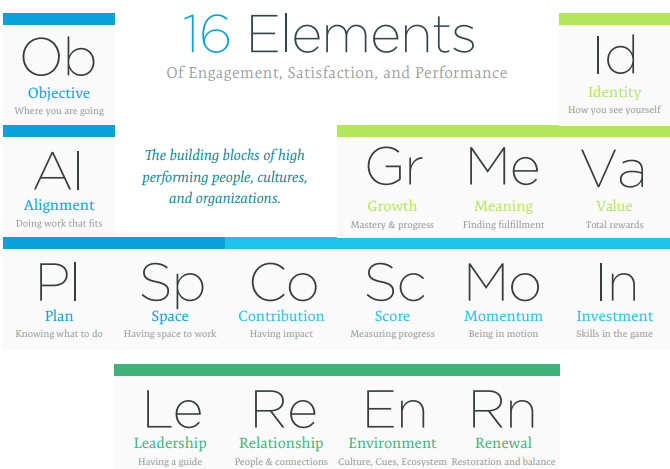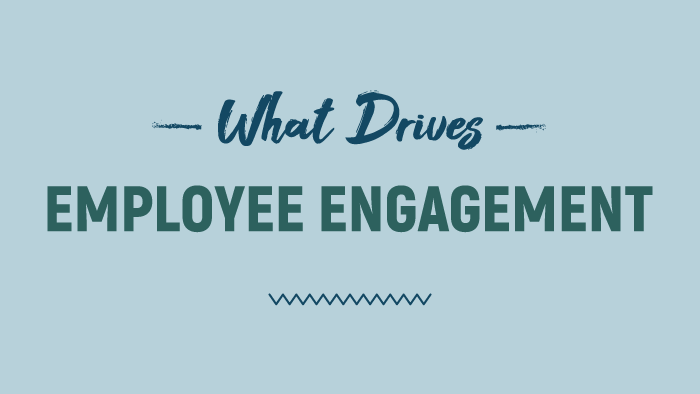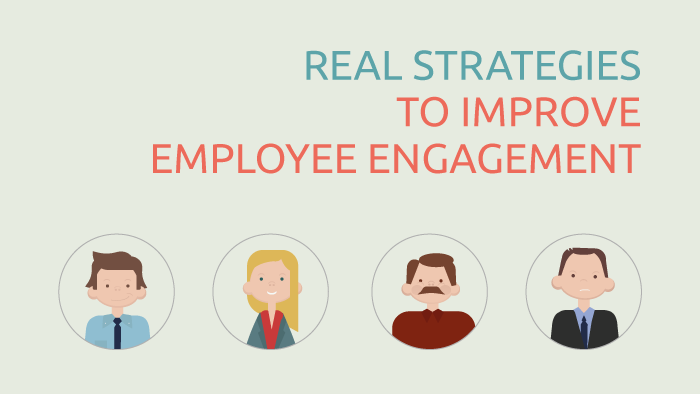Engaged employees understand their role and how it fits into their organization’s mission and vision. They are passionate about their jobs and put effort into their work. However, employee engagement is something that a lot of organizations struggle with.
A recent Gallup study found that employee engagement continues to fall from its peak levels recorded in 2020. In 2023, 34% of employees were actively engaged, down from 36% in 2020. Gallup also found that 50% of employees were not engaged at work (quiet quitting) in 2023. This is a common and growing issue in the workplace.
So, what can be done to engage employees while also keeping them satisfied at work? You must understand what employee engagement is and why you want it. Training on employee engagement has a lot of moving parts, but we’re here to break them all down with you.
Defining Employee Engagement, Its Importance, and How It Ties to Satisfaction
It’s important to know that improving employee engagement is a multifaceted issue that requires a variety of strategies and initiatives. The mistake is seeking to fix employee engagement with a single solution, or even more common, to see engagement as the same thing as satisfaction, and invest money into a solution for a separate issue.
For many years, employers have tried to address engagement by bringing in snack bars or foosball tables, but what they don’t realize is that they’ve targeted employee satisfaction and not engagement.
It’s perfectly reasonable for employees to be satisfied in their day-to-day work, but not be engaged in it. Employees can enjoy what they do, but not actively try to engage themselves through opportunities for growth and promotions.
There’s a spectrum of engagement for employees – engaged, disengaged, and actively disengaged. Engaged employees have a passion for what they’re doing and are connected to the company. Disengaged employees are what many would call “checked out” because they simply go through the motions of their everyday tasks. Actively disengaged employees are vocal about their unhappiness and work to undermine what others have accomplished.
Why Employees Are Disengaged in the First Place
While new hires are still gung-ho about their career, over time, some employees start to become less and less engaged in their jobs and the company. There are any number of internal and external factors that can affect an employee this way.
Poor leadership, management, and communication are three big factors in disengagement. Having no constructive feedback or one-on-one meetings with managers can lead to employees feeling undervalued and underappreciated. Along with this, feeling overworked can also drive low engagement. Without meetings with managers to talk about workload, your work pipeline could get bogged down, leaving employees feeling overwhelmed.
Tying into that, lack of recognition, training, collaboration, and necessary tools can quickly drive employees toward disengagement. Again, businesses that show they care about the growth and development of their employees will see higher returns and engagement.
And then there is the elephant in the room. Pay. Not paying enough or not having a clear hierarchy and career trajectory can cause loss of interest in the organization.
For more insight into what drives engagement, check out this infographic:
The Business Benefits of Improving Employee Engagement
High employee engagement should matter to your organization because a Harvard Business Review article found that disengaged employees cost businesses up to $550 billion a year while only investing $100 billion. That investment is paying off.
According to Gallup, organizations with higher employee engagement achieve earnings-per-share growth that is more than four times that of their competitors. The same article compares top businesses with the bottom 25% and found that the more highly engaged businesses have better customer engagement, productivity, employee retention, and see a 21% higher profitability.
Gallup investigates further and shows that organizations with higher engagement have:
- 24% less turnover in high-turnover organizations
- 59% less turnover in low-turnover organizations
- 10% increases in customer ratings
- 17% higher productivity
- 41% lower absenteeism
How to Increase Employee Engagement and Where to Start
First, it’s important to gauge your employee engagement. You won’t know how far you have to go until you actually ask the people working for you. To do this, you’ll need to look at your eNPS, or employee net promoter score. This is much like the NPS score you use to gauge how customers feel, but it’s turned inward and looks at whether an employee would recommend your workplace to someone else or not.
While this process does not fix issues present in an organization, it is a valuable stepping stone to improving your workplace.
Once you have that measurement, it is important to look at what drives employee engagement.
A 2017 SHRM report on employee satisfaction and engagement broke down data into three areas that help build strong employee engagement. The survey asked respondents to reply on a scale of 1 (least engaged) to 5 (very engaged) on a set of 38 different factors.
Conditions for Engagement
Conditions for engagement included any factors that had to do with the workplace environment and the work being done. Out of 5, respondents averaged a 3.9 on their working conditions and tasks themselves.
Engagement Opinions
Engagement opinions included solely the employee’s connection with their work and how they felt about it. Out of 5, the average response was a 4.0.
Engagement Behaviors
Engagement behaviors included colleagues’ connection with other employees’ work. Out of 5, the average was a 3.7. Employees tend to rate their own engagement level to be higher than their colleagues’ levels.
A Model That Works
Organizations can influence engagement levels by demonstrating that equity and candidness are important. On top of that, equality and transparency must be evident to thrive and inspire continuous success.
Rusty Lindquist has identified 16 elements that are present in engaging organizations:

He organized the chart into four sections.
First there are the inputs, or what is needed to get work done. An engaged employee:
- Has a clear objective and cares about it
- Does work that aligns with that vision and their own skill sets
- Knows what the plan is and how to move forward toward success
- Has a great workspace, in person or virtually
Next there is the action phase, or getting the work done. An engaged employee should:
- Feel like they are making contributions that make a difference
- Keep “score” by measuring progress to be accountable
- Feel the momentum of moving forward
- Be invested in the work and tied to its success
Then there are the outputs that measure what an employee takes away from the work. An engaging company should help employees:
- See personal or professional growth by gaining mastery of skills
- Find meaning and purpose in the work that they complete
- Feel like a person of value and appreciated for their work
- Discover their identity and what they’re capable of, and help build confidence
Lastly, there are the influencers that fuel the work. Leaders bear responsibility for helping employees stay engaged by:
- Developing leadership skills that help them believe in, challenge, and guide employees
- Caring about employees enough to develop genuine relationships and connections
- Establishing a healthy culture and environment with open access to crowd-sourced information
- Finding restoration and renewal through balance and moderation
How to Motivate Employees
Telling someone they have to do something is the quickest way to make them not want to do it, but that’s how a lot of organizations work. Making demands without motivation will just push employees to look elsewhere for employment.
There seems to be a common perception that employee motivation is tied to salary – but the truth is that motivation is less financial, and more emotional (although being paid fairly is absolutely a factor).
Motivating employees is a key factor in driving up engagement. A model you can use to motivate employees who are feeling disengaged is effectance motivation. This involves removing mental, emotional, and physical obstacles to success.
The effectance model is built upon the idea that after basic needs are met, we find a new drive to influence our environment. When that environment is our workplace, that drive becomes our motivation, and it manifests in three distinct forms.
The types of effectance motivation include:
- People effectance – our ability to have a positive impact on those around us
- Object effectance – our ability to repair, build, and create things
- Self effectance – the feeling we have when we believe we are in control of our lives or careers
To help develop some ideas to further your employee engagement, check out our blog for several creative ideas:

Optimizing these factors will have a powerful impact on the level of motivation in your workplace. When you know engagement is an issue in your organization, but your efforts to improve it aren’t showing any change, then it’s time to enact some real strategies.
Best Practices for Implementing Employee Engagement Initiatives
Now that you have some ideas about how to engage your employees, it’s time to put those employee engagement training plans into action. Here’s a five-step plan to get your ideas implemented.
1. Define Your Company
You need to answer the question “Why does this company exist?” For example, Tesla says it is here “to accelerate the world’s transition to sustainable energy.” Developing your mission statement can help guide the rest of this process. It should be easy to believe in, emotionally compelling, and give a greater sense of purpose to the work being done by employees in your organization.
2. Develop Your Leadership Team
Do your leaders and managers have the coaching skills they need to develop the people they rely on? If they do, employees will feel empowered to work hard, take risks, share ideas, and innovate. Employees will have great things to say about their managers and team productivity will trend upward.
3. Create an Experience
This step is all about evaluating what you’re offering employees in terms of your workplace, your culture, and the work you ask them to accomplish. You’ll need to examine your culture because your values drive your organization’s performance. You should also evaluate what you’re asking of your workers. An engaged employee will understand that even mundane work helps further an organization and needs to be done.
4. Provide Ongoing Development
Employees will thrive in an organization that invests in them. By focusing on employee training and development, employees will begin to feel valued and in turn motivated and engaged. Using an on-demand library full of microlearning content means employees can easily fit development into their daily routine without sacrificing productivity.
5. Report and Audit
At this point, in essence, you’ve built an environment where the best employees are allowed to shine. At this stage, you can further refine your engaged workforce by examining who you’re hiring and how your employees are behaving. Some things to measure or observe are:
- The frequency with which your employees are finding new ways to contribute ideas that further your business goals
- The level at which your employees understand when they’ve done well, and willingly improve their skills that need work
- The overall buy-in your employees have for your organization’s mission and goals
Employee engagement is a multifaceted subject to tackle, and the interconnectivity of influences on engagement can make it difficult to decide where to start improving your employee engagement efforts.


